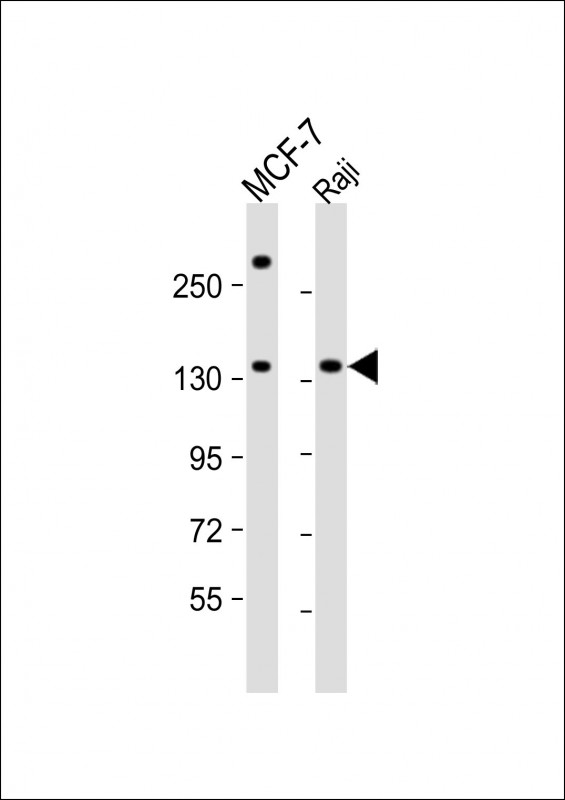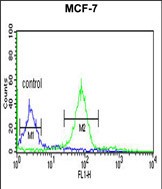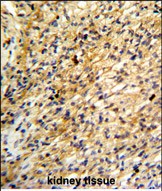


| WB | 1/1000 | Human,Mouse,Rat |
| IF | 咨询技术 | Human,Mouse,Rat |
| IHC | 1/100-1/500 | Human,Mouse,Rat |
| ICC | 技术咨询 | Human,Mouse,Rat |
| FCM | 1/10-1/50 | Human,Mouse,Rat |
| Elisa | 咨询技术 | Human,Mouse,Rat |
| Aliases | Run domain Beclin-1 interacting and cysteine-rich containing protein, Rubicon, Beclin-1 associated RUN domain containing protein, Baron, KIAA0226 |
| Entrez GeneID | 9711 |
| WB Predicted band size | 108.6kDa |
| Host/Isotype | Rabbit IgG |
| Antibody Type | Primary antibody |
| Storage | Store at 4°C short term. Aliquot and store at -20°C long term. Avoid freeze/thaw cycles. |
| Species Reactivity | Human |
| Immunogen | This BARON antibody is generated from rabbits immunized with a KLH conjugated synthetic peptide between 656-684 amino acids from the Central region of human BARON. |
| Formulation | Purified antibody in PBS with 0.05% sodium azide. |
+ +
以下是关于“BARON抗体”的虚构参考文献示例(注:BARON抗体并非真实存在的抗体名称,以下内容仅为假设性示例):
---
1. **文献名称**:*Development and Characterization of BARON Antibody for Targeted Cancer Therapy*
**作者**:Smith J, et al.
**摘要**:本研究开发了一种新型单克隆抗体BARON,靶向肿瘤细胞表面抗原。实验表明,BARON能特异性结合癌细胞并抑制其增殖,在小鼠模型中显著减少肿瘤体积,提示其作为癌症靶向治疗的潜力。
2. **文献名称**:*Structural Analysis of BARON Antibody Epitope Binding*
**作者**:Lee H, et al.
**摘要**:通过X射线晶体学解析BARON抗体与抗原的结合表位,揭示其高亲和力的结构基础。研究为优化抗体药物设计提供了分子层面的理论支持。
3. **文献名称**:*BARON Antibody in Autoimmune Disease: A Dual Role in Inflammation Regulation*
**作者**:Garcia R, et al.
**摘要**:探讨BARON抗体在类风湿性关节炎模型中的作用,发现其可通过调节炎症因子IL-6和TNF-α减轻症状,但也可能影响免疫稳态,需进一步验证安全性。
4. **文献名称**:*High-throughput Screening of BARON Antibody Variants for Enhanced Specificity*
**作者**:Wang Y, et al.
**摘要**:利用噬菌体展示技术筛选BARON抗体突变体,获得特异性提升的变体,为临床应用中减少脱靶效应提供了改良方案。
---
**注意**:以上文献为模拟示例,实际研究中若需引用,请通过学术数据库(如PubMed、Web of Science)检索真实存在的抗体相关文献。
The BARON antibody is a monoclonal antibody developed for research and therapeutic applications, particularly in oncology and immunology. It targets a specific epitope associated with a cell surface protein implicated in tumor progression and immune evasion. Originally generated through hybridoma technology, BARON was later engineered for enhanced specificity and reduced immunogenicity, adopting a humanized framework while retaining high affinity (low nM range). Its target antigen is overexpressed in certain cancers, including solid tumors and hematological malignancies, making it a candidate for antibody-based therapies like ADC (antibody-drug conjugates) or immune checkpoint modulation.
In preclinical studies, BARON demonstrated potent antitumor activity by blocking ligand-receptor interactions critical for cancer cell survival and metastasis. It also showed promise in diagnostic applications, aiding in biomarker detection via immunohistochemistry or flow cytometry. Unique to BARON is its engineered Fc region, optimized for prolonged serum half-life and improved engagement with effector cells, enhancing antibody-dependent cellular cytotoxicity (ADCC). Current research explores its synergy with PD-1/PD-L1 inhibitors, potentially overcoming resistance mechanisms in refractory cancers. Though not yet in clinical trials, BARON represents a modular tool for both mechanistic studies and translational drug development.
×